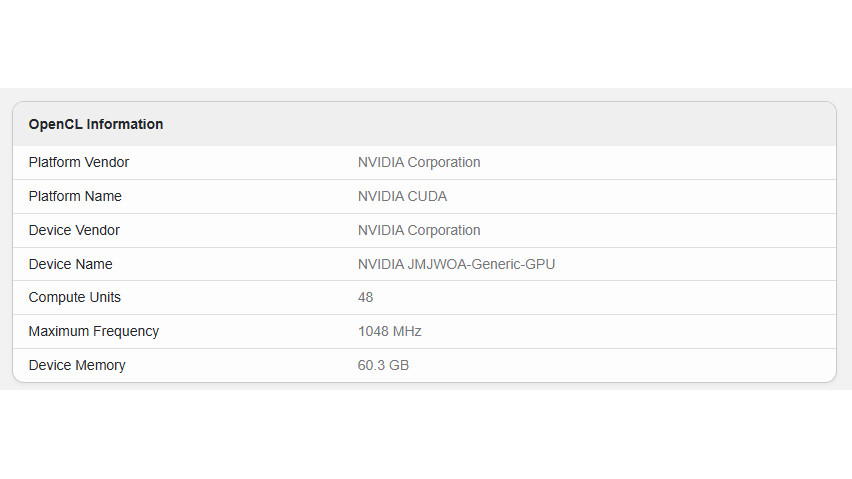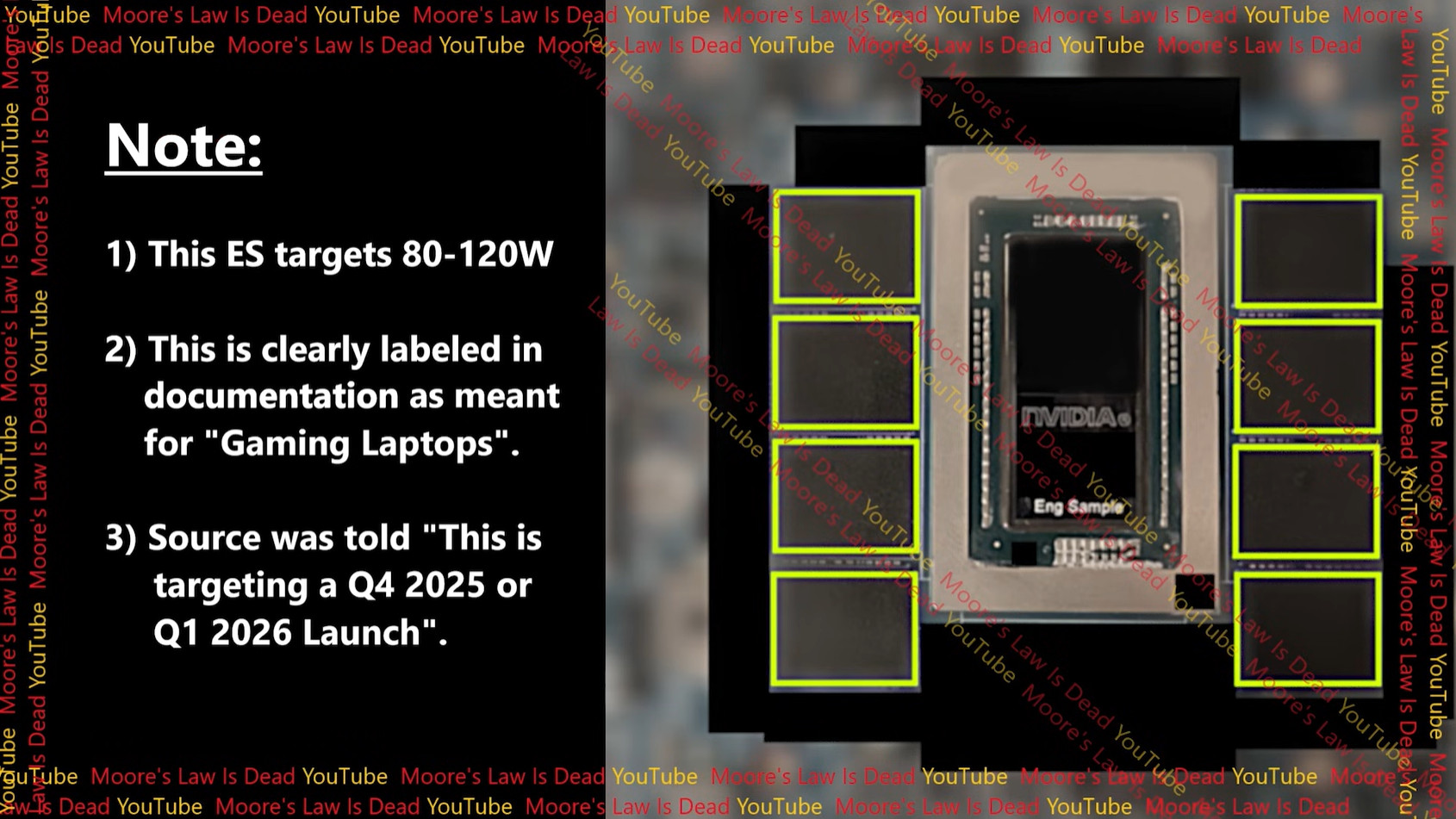
It's no longer much of a secret that NVIDIA is developing its own System-on-Chips (SoC) — currently named "N1" and "N1x" — for use in laptops and, potentially, desktop PCs.
Rumors began in 2023 that NVIDIA was weighing its options regarding an ARM SoC for Windows PCs, and only more recently have leaks begun to appear.
NVIDIA has teamed up with semiconductor manufacturer MediaTek to produce these ARM-based chips, and despite some reported delays in the process, I'm still expecting to see NVIDIA officially announce the new chips in early 2026.
Now, thanks to a recent Geekbench OpenCL benchmark (via Videocardz) result entry popping up online, we have a bit more information about the upcoming N1x.
The 46,361 OpenCL score shouldn't be taken as concrete performance evidence. The N1x is still a long way from full production, and what I assume is a prototype isn't going to be able to push full performance due to unfinished drivers and what are most likely power and frequency caps.
I can't imagine that NVIDIA's N1x would actually run at a maximum 1,048 MHz frequency, as spotted in the Geekbench leak. So while early N1x performance hovers around the RTX 2050, I'm expecting to see a lot more as the chip is finalized.
As listed, the NVIDIA N1x has two 10-core Grace CPU clusters for 20 cores total. The Geekbench listing also confirms that the chip has 48 Compute Units (CU), otherwise known as Streaming Multiprocessors (SM).
All the latest news, reviews, and guides for Windows and Xbox diehards.
With 128 CUDA cores per CU, you're looking at about 6,144 CUDA cores. That's the exact same number of CUDA cores in the desktop version of the RTX 5070, which uses NVIDIA's GB205 GPU chip.
However, considering how closely other specs from the N1x match up to NVIDIA's GB10 "Grace Blackwell Superchip," I'm more inclined to believe the N1x will be less of a 5070 and more of a nerfed GB10.
For reference, the GB10 — which powers NVIDIA's DGX Spark, a desktop-sized AI supercomputer — has a 20-core ARM-based CPU split into two 10-core clusters. This chip was also created by NVIDIA and MediaTek, and it should run either NVIDIA's DGX or Windows on Arm operating systems.
Early performance results aside, the N1x is looking like it will challenge or best most other integrated GPUs currently on the market, including those from AMD, Intel, Qualcomm, and Apple.
As Tom's Hardware points out, the early N1x OpenCL result pulls ahead of Apple's M3 Max and the AMD Radeon 890M; both generally hit a 37,500 score, as tested by the team over there.
Looking at Geekbench's top OpenCL performers, the best result from a Qualcomm Snapdragon X Elite Adreno integrated GPU is about 23,955.
NVIDIA's N1x has the potential to change laptop design forever
The YouTube channel Moore's Law is Dead got its hands on what appears to be a rough image of an engineering sample of NVIDIA's N1x design in May 2025. The leak revealed an expected 80-120W power draw and a likely Q1 2026 release.
An older leak, also from the MLID channel, suggested that the chip would run at the same performance level as an RTX 4070 Laptop GPU. That sounds a lot better than the RTX 2050 level the new OpenCL leak suggests.
As I noted in my coverage of the MLID leak, having an APU like the N1x handle both CPU and GPU work without needing an extra 115W (for the RTX 4070L discrete GPU) of power could be a massive breakthrough for laptops.
Considering the efficiency of an ARM CPU paired with an NVIDIA GPU and all of its DLSS AI upscaling magic has me eager to see exactly what NVIDIA and MediaTek have cooked up.
Unfortunately, I can't give you a solid date for an NVIDIA unveiling due to delays.
According to DigiTimes, which broke the delay story, NVIDIA and MediaTek are experiencing "a combination of delays in Microsoft's operating system roadmap, ongoing chip revisions at Nvidia, and weakening demand in the overall notebook market."
It's also worth a reminder that NVIDIA is likely working on an N1 version of its ARM-based SoC, which could come to standard laptops without gaming intentions. It'd be a similar approach to Qualcomm and its Snapdragon X Elite, X Plus, and X tiers of chips for Windows on Snapdragon.

Cale Hunt brings to Windows Central more than nine years of experience writing about laptops, PCs, accessories, games, and beyond. If it runs Windows or in some way complements the hardware, there’s a good chance he knows about it, has written about it, or is already busy testing it.
You must confirm your public display name before commenting
Please logout and then login again, you will then be prompted to enter your display name.



